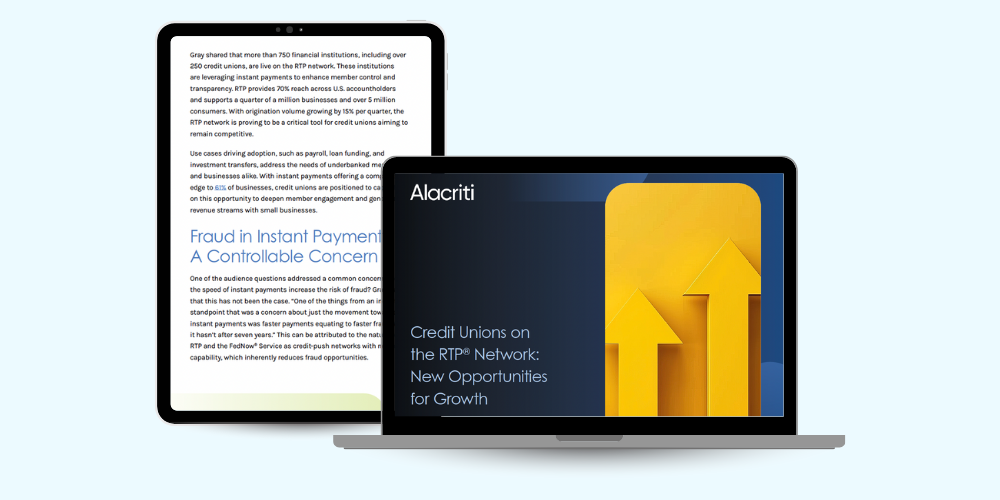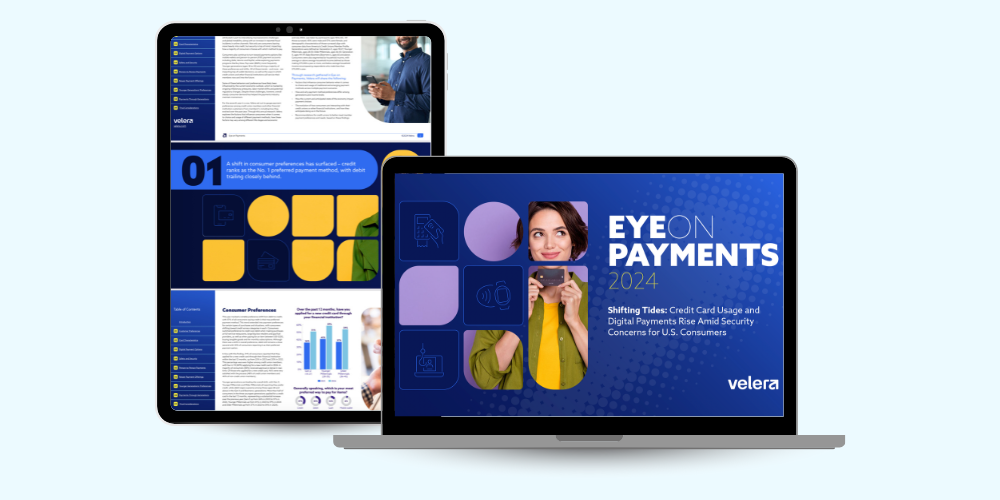The Q&A session during the American Banker-hosted webinar Payments in 2025: What You Need to Know, featuring Erika Baumann, Director of Commercial Banking & Payments Practice at Datos Insights, and Mark Majeske, SVP of Faster Payments at Alacriti, addressed key questions from an audience of over 1,000 financial institutions. Below are a few key questions and expert responses from the discussion:
Baumann clarified the distinction: “ACH is not real time.” Majeske added that while ACH remains foundational, real-time rails like RTP and FedNow are changing expectations. "I also would kind of include Visa Direct in that as well," he said, noting that depending on the use case, Visa Direct can deliver real-time-like experiences.
Businesses are demanding greater speed and efficiency. Baumann explained, “The number one gap that businesses report is speed of payment or settlement, and followed by the visibility of payments in real time.” While some banks already offer faster payments, a critical gap remains: “They just have no idea how to use them,” she said. Education remains key.
Majeske highlighted that RTP’s increased transaction limit is already opening new use cases: “That increase to $10M has severely increased real estate transactions being done via instant payments.” He expects FedNow to follow suit as market needs continue to evolve.
“There’s a lack of response or a lack of that habit of going in and responding to it,” said Baumann, pointing to consumer behavior and the challenges of normalization. Majeske added, “To me it’s all about due date as a consumer. I’m not going to pay you early just because you sent me a request.”
Majeske identified two drivers: “I think there are two parties involved. I think it’s the bank . . . but I’m starting to see a trend that fintechs are starting to come up with some useful RFP options for you.” Whether innovating internally or partnering externally, financial institutions need to take action.
What happens if banks only offer Receive capabilities?
Baumann was direct: “They’re moving to the financial institutions that can give them the most robust technology . . . they’re also moving directly to fintechs.” Without full real-time payment capabilities, institutions risk silent client attrition as customers seek more comprehensive solutions elsewhere.
According to Baumann, it’s not about the infrastructure alone: “It’s the revenue streams that come from those products with those value-added services that are really the basis of your ROI and your business case, not the payments hub.” Institutions should focus on enabling solutions like reporting, AP automation, and enhanced client services to drive sustainable growth.
“Yes,” said Majeske. He stressed that institutions should avoid delaying a full rollout: “When you talk about a phase two, I’ve never done a phase two.” Launching both at once maximizes efficiency and future-proofs the institution’s payment capabilities.
Baumann was clear: “No. Even the banks with the highest volumes of Send are not incurring higher instances of fraud specific to the offering of that rail.” She emphasized that proper education and proactive fraud controls are far more critical than concerns about the rail itself.
For a deeper dive into the future of payments, including monetization strategies, RFP expansion, and the evolution of faster payments, watch the full webinar Payments In 2025: What You Need to Know, hosted by American Banker and sponsored by Alacriti.
Alacriti’s centralized payment platform, Orbipay Payments Hub, provides innovation opportunities and the ability to make smart routing decisions at the financial institution to meet their individual needs. Financial institutions can take full ownership of their payments and control their evolution with ACH, Wire, TCH’s RTP® network, Visa Direct, and the FedNow® Service, all on one cloud-based platform. To speak with an Alacriti payments expert, please contact us at (908) 791-2916 or info@alacriti.com.








